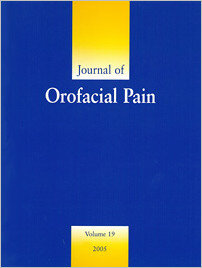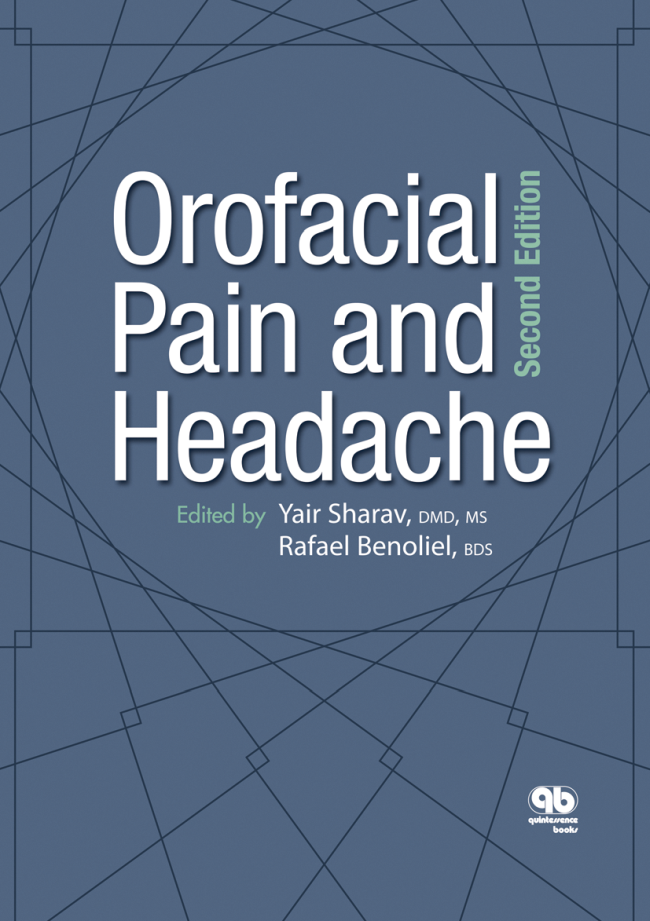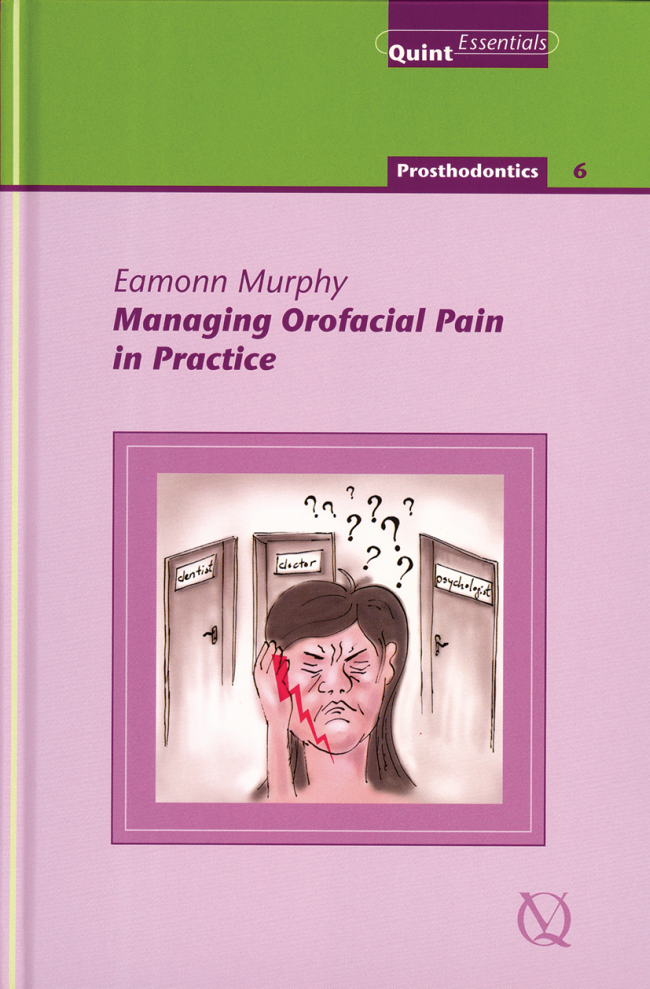Seiten: 5, Sprache: EnglischSessle, Barry J.Seiten: 9-23, Sprache: EnglischOlivo, Susan Armijo / Bravo, Jaime / Magee, David J. / Thie, Norman M. R. / Major, Paul W. / Flores-Mir, CarlosAims: To carry out a systematic review to assess the evidence concerning the association between head and cervical posture and temporomandibular disorders (TMD).
Methods: A search of Medline, Pubmed, Embase, Web of Science, Lilacs, and Cochrane Library databases was conducted in all languages with the help of a health sciences librarian. Key words used in the search were posture, head posture, cervical spine or neck, vertebrae, cervical lordosis, craniomandibular disorders or temporomandibular disorders, temporomandibular disorders, and orofacial pain or facial pain. Abstracts which appeared to fulfill the initial selection criteria were selected by consensus. The original articles were retrieved and evaluated to ensure they met the inclusion criteria. A methodological checklist was used to evaluate the quality of the selected articles and their references were hand-searched for possible missing articles.
Results: Twelve studies met all inclusion criteria and were analyzed in detail for their methodology and information quality. Nine articles that analyzed the association between head posture and TMD included patients with mixed TMD diagnosis; 1 article differentiated among muscular, articular, and mixed symptomatology; and 3 articles analyzed information from patients with only articular problems. Finally, 2 studies evaluated the association between head posture and TMD in patients with muscular TMD. Several methodological defects were noted in the 12 studies.
Conclusion: Since most of the studies included in this systematic review were of poor methodological quality, the findings of the studies should be interpreted with caution. The association between intra-articular and muscular TMD and head and cervical posture is still unclear, and better controlled studies with comprehensive TMD diagnoses, greater sample sizes, and objective posture evaluation are necessary.
Schlagwörter: cervical lordosis, head posture, systematic review, temporomandibular disorders
Seiten: 24-30, Sprache: EnglischSipilä, Kirsi / Ylöstalo, Pekka V. / Joukamaa, Matti / Knuuttila, Matti L.Aims: To assess, firstly, the prevalence of facial pain associated with widespread pain and the prevalence of high levels of depressive symptoms (ie, "depressiveness") among subjects with this pain condition, and secondly, the association between depressiveness and a facial pain condition.
Methods: This study forms part of the Northern Finland Birth Cohort study. The original material consisted of all people whose expected birthdate was in 1966 in Northern Finland. Of these, 5,696 participated in a follow-up study at the age of 31. As part of it, data on facial pain, pain in other areas of the body, depressiveness (measured using the Symptom Checklist-25 depression subscale) and sociodemographic background data were gathered using questionnaires. Prevalence proportion ratios were estimated using log-binomial regression models.
Results: Facial pain and simultaneous widespread pain were reported by 8.3% of the subjects (6.6% of men and 9.9% of women), and 27.4% of those with widespread pain were depressive. Comorbidity between facial pain, widespread pain, and depressiveness was found to be particularly prevalent among women.
Conclusion: Comorbidity should be taken into account in clinical practice. A multidisciplinary approach is needed, especially for patients with complex pain conditions.
Schlagwörter: facial pain, depression, widespread pain
Seiten: 31-35, Sprache: Englischvan der Meulen, Marylee J. / Lobbezoo, Frank / Aartman, Irene H. A. / Naeije, MachielAim: To examine the relationship between different types of selfreported oral parafunctions and pain intensity in patients with temporomandibular disorders (TMD).
Methods: Two cohorts of TMD pain patients, 1 comprising 303 patients and the other comprising 226 patients, completed a 12-item oral parafunctions questionnaire as well as the Research Diagnostic Criteria Axis II questionnaire, which includes a characteristic pain intensity score (CPI). Relationships between oral parafunctions and CPI were examined; age and gender were controlled for. The effects of phrasing of the oral parafunction questions were also examined. For 1 cohort, the questions were directed at the mere occurrence of the parafunctions; in the other, the questions addressed the perceived stressfulness of parafunctional behavior to the jaw.
Results: A principal component analysis of the responses to the questionnaires led to 3 factors (scales) in both cohorts: (1) a BRUX scale for bruxism activities; (2) a BITE scale for biting activities (eg, chewing gum, nails); and (3) a SOFT scale for soft tissue activities (eg, tongue, lips). Statistical significance was reached for 2 of the 6 relationships studied (P .05), but with a very low explained variance (approximately 3.5%).
Conclusion: No clinically relevant relationships were found between different types of self-reported oral parafunctions and TMD pain complaints.
Schlagwörter: bruxism, oral parafunctions, pain, self-report, temporomandibular disorders
Seiten: 36-42, Sprache: EnglischReiter, Shoshana / Eli, Ilana / Gavish, Anat / Winocur, EphraimAims: To use the Axis I and Axis II test items of the Research Diagnostic Criteria for Temporomandibular Disorders (RDC/TMD) to study the differences in temporomandibular disorders (TMD) between Israeli Arabs and Israeli Jews.
Methods: Sixty-five Israeli Jews and 50 Israeli Arabs who were referred with a proposed diagnosis of TMD participated in the study.
Results: The overall male:female ratio was 1:7.3 in the Israeli Arab group compared with 1:2.4 in the Israeli Jewish group, with a significant difference in gender between groups (P .05). A comparison of women only in both groups (44 Israeli Arab women and 46 Israeli Jewish women) revealed no statistically significant differences in Axis I diagnoses, disability days, pain duration, and Characteristic Pain Intensity scores. The Israeli Arab women scored higher in Axis II parameters: Differences between the 2 groups were statistically significant with respect to depression scores (P .001), anxiety scores (P .001), somatization scores (pain items excluded) (P .001), somatization scores (pain items included) (P .05), average disability scores (P .01), and chronic pain grade (P .05).
Conclusion: The results highlight the social component of the biopsychosocial model in sculpturing chronic pain behavior. Our research suggests the possible need for cross-cultural calibration of the Axis II assessment tools of the RDC/TMD.
Schlagwörter: chronic pain, cross-cultural comparison, culture, ethnicity, Research Diagnostic Criteria for Temporomandibular Disorders
Seiten: 43-52, Sprache: EnglischJohn, Mike T. / Hirsch, Christian / Reiber, Thomas / Dworkin, Samuel F.Aims: To develop a German-language version of the Research Diagnostic Criteria for Temporomandibular Disorders (RDC/TMD) through a formal translation/back-translation process, to summarize available data about their psychometric properties, and to provide new data about psychometric testing of components of the RDC/TMD.
Methods: To cross-culturally adapt the instrument, the RDC/TMD were translated using a forward- backward method, except for measures of somatization and depression, because German-specific instruments of these already existed. The psychometric properties of the RDC/TMD were examined, and the literature on this topic was reviewed.
Results: The available literature about reliability of clinical examination methods (4 studies) showed at least acceptable results, with a median intraclass correlation coefficient (ICC) of 0.60. Reliability of RDC/TMD components Jaw Disability List (JDL) and Graded Chronic Pain Scale (GCPS) was sufficient (ICC for retest reliability [n = 27] was 0.76 for JDL and 0.92 for GCPS; Cronbach's alpha for internal consistency [n = 378] was 0.72 and 0.88, respectively). A priori hypothesized associations between GCPS or JDL summary scores and self-report of general health, oral health, oral health-related quality of life, or dysfunctional pain, which were measured by means of the Multidimensional Pain Inventory, were confirmed in a convenience sample of clinical TMD patients (n = 378). These correlations were interpreted as support for the validity of the GCPS and JDL. The original RDC/TMD include measures for somatization and depression (SCL-90-R); however, equivalent German instruments to assess these constructs ("Beschwerdenliste," "Allgemeine Depressionsskala") have wellestablished validity and reliability in the German cultural environment.
Conclusion: The psychometric properties and international comparability of the German version of the RDC/TMD (RDC/TMD-G) make this instrument suitable for the assessment of TMD in Germany.
Schlagwörter: cross-cultural adaptation, orofacial pain, reliability, temporomandibular disorders, validity
Seiten: 53-58, Sprache: EnglischCai, Heng-Xing / Luo, Jing-Mei / Long, Xing / Li, Xiao-Dan / Cheng, YongAims: To measure the activity of oxygen free radicals and the level of antioxidant enzyme superoxide dismutase (SOD) in the synovial fluid (SF) of the temporomandibular joints (TMJs) of patients with temporomandibular disorders (TMD).
Methods: Thirty-two patients were divided into 3 subgroups: anterior disc displacement with reduction, anterior disc displacement without reduction, and osteoarthrosis. Six healthy volunteers served as controls. A pumping procedure was used to take SF from the superior TMJ space. The concentration of lipid peroxidation products was assessed by means of the thiobarbituric acid reaction, and the level of SOD was assessed with spectrophotometry.
Results: SF levels of lipid peroxides (LPO) in the control and patient groups were 0.010 (± 0.004) x 10-3 nmol/mg protein and 0.61 (± 0.121) x 10-3 nmol/mg protein, respectively. SF SOD levels were 4.61 (± 1.30) NU/mg protein and 9.83 (± 2.66) NU/mg protein, respectively. Both the concentration of LPO and the level of SOD activity were significantly higher in the TMD patients than in the normal control subjects (P .001 and P .01, respectively). There were no significant differences in the level of LPO or SOD between the 3 subgroups.
Conclusion: These results demonstrate oxygen free radicals and antioxidant enzymes may be connected in the pathogenesis of TMD.
Schlagwörter: lipid peroxides, oxygen free radicals, superoxide dismutase, synovial fluid, temporomandibular disorders
Seiten: 59-73, Sprache: EnglischJuhl, Gitte Irene / Svensson, Peter / Norholt, Sven Erik / Jensen, Troels StaehelinAims: To investigate the degree and duration of neuronal hyperexcitability due to local inflammatory trauma after surgical removal of an impacted mandibular third molar.
Methods: A total of 32 healthy men (16 patients, 16 control subjects) underwent quantitative sensory tests (QST) at baseline (preoperatively) and 2, 7, and 30 days following surgical removal of a mandibular third molar. Thermal and mechanical QST was applied to the extraoral and intraoral regions as well as to the dominant forearm.
Results: Detection thresholds for thermal and mechanical stimuli did not change over time in patients and control subjects, but pain thresholds (thermal, pressure, electrical) in the control group increased significantly. Patients showed significantly decreased pain pressure thresholds and pressure pain tolerance (P .05 for both) on the operated side and absence of adaptation to the tests for up to 30 days postoperatively.
Conclusion: These results indicate that even a minor surgical procedure in the orofacial region may be sufficient to evoke hyperexcitability in an area adjacent to the surgical wound for up to 30 days. The decreased adaptive capacity in the patient group also suggests the involvement of central pain-regulatory mechanisms in response to the surgical trauma.
Schlagwörter: orofacial, pressure pain, sensitization, third molar
Seiten: 74-81, Sprache: EnglischReiter, Shoshana / Gavish, Anat / Winocur, Ephraim / Emodi-Perlman, Alona / Eli, IlanaPatients referred from an otorhinolaryngologist with a chief complaint of earache or other ear symptoms are common in a temporomandibular disorders (TMD) clinic. These patients often complain of other symptoms, such as headache, facial pain, and limited mouth opening, all of which can be present in a patient suffering from a nasopharyngeal carcinoma (NPC). The aim of this case report was to describe the signs and symptoms of NPC and discuss possible causes for the misdiagnosis of NPC as TMD. The characteristics of 8 NPC patients reported in the literature whose cancer was initially misdiagnosed as TMD and those of an NPC patient with TMD-like symptoms treated at the clinic of 1 of the authors are described, and the reasons for misdiagnosis are discussed. A revision of Trotter's syndrome for the differential diagnosis of TMD is proposed. There is a need for detailed exclusion criteria to be applied prior to the assignment of a clinical diagnosis based on the Research Diagnostic Criteria for TMD.
Schlagwörter: nasopharyngeal carcinoma, orofacial pain, temporomandibular disorders, Trotter's syndrome











